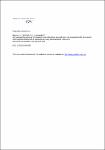HIV serosorting among HIV-positive men who have sex with men is associated with increased self-reported incidence of bacterial sexually transmissible infections
Marcus, Ulrich
Schmidt, Axel J.
Hamouda, Osamah
Background: We aimed to quantify the frequency of HIV serosorting among men who have sex with men (MSM) in Germany, and evaluate the association of serosorting with other sexual risk management approaches (RMA) and with the frequency of bacterial sexually transmissible infections (STI). Methods: An anonymous, self-administered questionnaire was distributed through German online sexual networking sites and medical practices in 2006. The analysis was based on 2985 respondents who reported an HIV test result. Based on two questions on RMA, serosorting was classified as tactical (an event-based decision) or strategic (a premeditated search for a seroconcordant partner). The analysis was stratified by HIV serostatus and seroconcordant partnership status. Results: HIV serosorting patterns were different for HIV-positive and HIV-negative participants. Tactical serosorting ranked second after RMA based on condom use (HIV-positive: 55.1%, HIV-negative: 45.1%; P < 0.001). While the overlap of strategic and tactical HIV serosorting among HIV-positive MSM was substantial (58.0%), HIV-negative strategic and tactical serosorting were more distinct (18.1% overlap). Among HIV-positive and HIV-negative respondents, tactical serosorting was associated with reduced condom use. Compared with respondents using RMA other than serosorting, HIV-positive men reporting serosorting had a three-fold increased risk for bacterial STI (strategic: odds ratio (OR) = 2.62; 95% confidence interval (CI): 1.76–3.89; tactical: OR= 3.19; 95% CI: 2.14–4.75; both for respondents without HIV seroconcordant partners). Conclusions: HIV serosorting has emerged as a common RMA among MSM. For HIV-positive MSM, it may contribute
Dateien zu dieser Publikation
Keine Lizenzangabe

